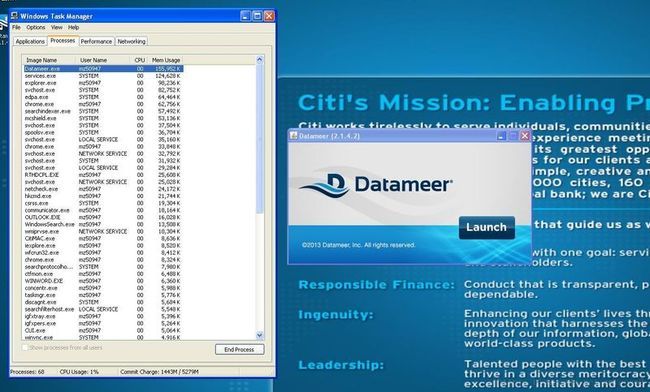Datameer for Hadoop Solution
Hadoop promises to become a ubiquitous framework for largescale business intelligence, but right now it is difficulty for many developersto use. Datameer’s approack – making Hadoop accessible to more users who needscalable analytic power for their organization’s big data requirements.
Inspired by the Google File System and MapReduce, Hadoop hasemerged as an open-source software framework that supports data intensivedistributed applications. Early adopters such as Facebook, Twitter and Yahooare successfully using Hadoop to tackle their big data analytic challenges.However, many other organizations struggle to get their Hadoop projects off theground since the framework technology lack’s and user tools and have a steeplearning curve.
Datameer offers the first big data analytics solution thatbrings the power of Hadoop analytics to end-users.
According to the May,2011 McKinsey report”Big data: The nextfrontier for competition, innovation and productivity”, there is a 40% growthin global generated per year while global IT spending will only increase 5% peryear. McKinsey also estimates that there is a 60% potential increase inretailer’ operting margins with big data and 1.5 million data-savvy managersare needed to take full advantage of big data in the US alone.
Hadoop, designed for the cost effective storage andprocessing of large volumes of data, is proven to scale to 4000 servers andpetabytes of data. Hadoop scales on clusters of commodity hardware of choiceand provides an affordable alternative to expensive database servers for thestorage of large data volumes. But implementation costs can be high for Hadoopbecause this open source framework is complex and offers few tools for dataloading, analytics and reportting.
In the context of data warehousing, unstructured data refersto information that either does not have a data model or has one that is noteasily usable by data warehouse applications, Common examples include Worlddocuments, video and audio files, call detail records, clickstream data, logfiles, email and social media data.
One of the distinct advantages of Hadoop is that it isdesigned for the storage and processing of both strcutured and unstructureddata because it does not impose a data model on information. DAS extends thisflecxibility to its data loading, data analytics and data visualizationreporting tools so that every aspect of the end-to-end solution accommodatesunstructured content just as well as structured data.
Datameer was designed to let analysts and other Big Dataend-users benefit from Hadoop. Datameer is the first business intelligence andanalytics platform built natively on Hadoop to allow for end-user analysis andcorrelation of any size structured, semi-structured and unstructured data.Datameer runs on all major Hadoop distributions and integrates easily intoexisting IT infrastructure with point-and-click deployment. Datameer can beeasly deployed over any Hadoop cluster, including those in-house or on public cloudenvironments like those at Amazon or Rackspace. Datameer easily integrates withall legacy technologies and datastreams, including existing businessintelligence data warehouses, transactional databases and other analyticstores. It also works with newer NoSQL technologies.
For analysis, Datameer provides a familiar spreadsheet userinterface that requires no programming to design end-to-end data processingpipelines. Datameer provides over 200 pre-built functions for exploring anddiscovering complex relationships. These include the basics suc as aggregationbut also advanced capabilities. Functions are provided for analysis of text,production of mathematical assessments, bioinformatics, engineering andstatistics. Once users integrate and analyze their data, they can visualize theresults using somple drag and drop wizards for creating visualizations anddashboards. An extensive library of widgets including tables, charts, graphs,and maps gives uers the ability to choose the visualization that will best helpthem understand the results.
What is a job?
A job sets up the connection to a datasource to improtinformation into Datameer for processing. It can then run at the inetrvals youspecify, for example, when manually triggered, when data changes, or at a timeschedule you set up. That way, you control how current the data is and howfrequently it gets updated.


